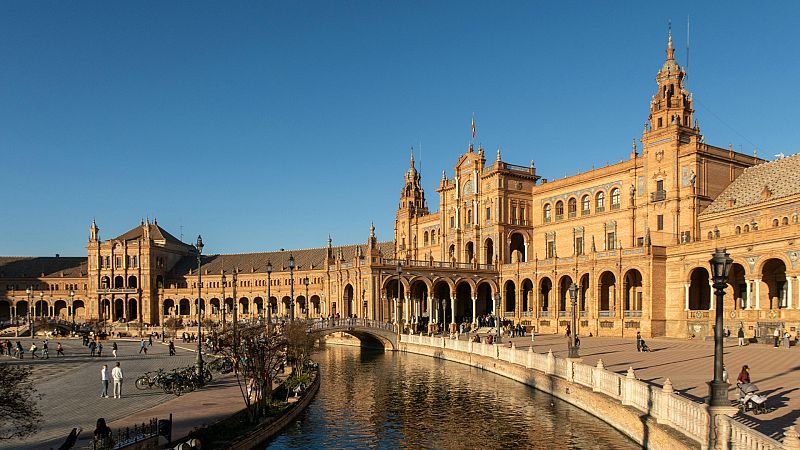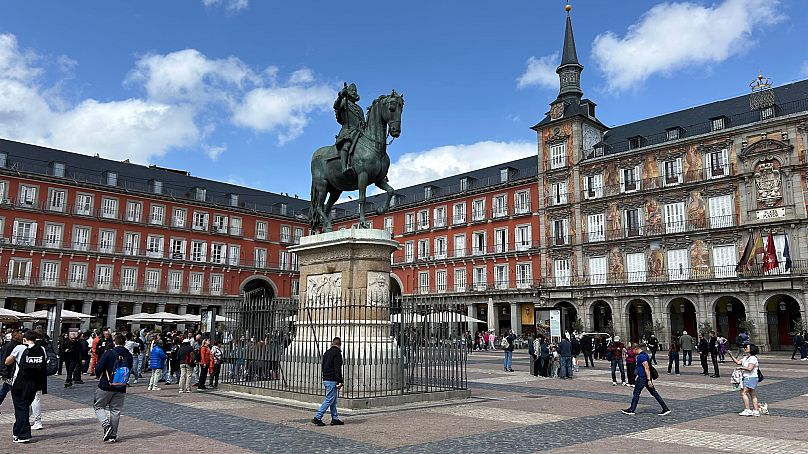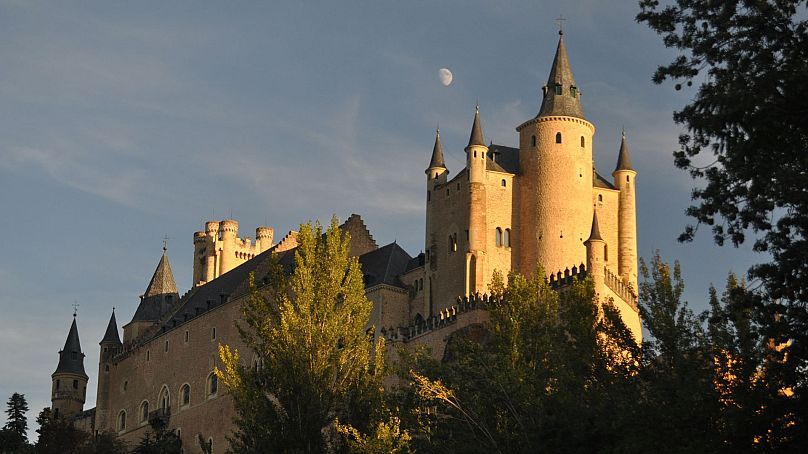From Star Wars to Black Mirror: Tourists are discovering Spain through famous filming location

Game of Thrones, La Casa de Papel, Elite, Black Mirror, and Almodóvar’s movies, the list of major international productions shot, in total or partially, in Spain has continued to grow in recent years.
It has also led to the development of cinema and television tourism in the country as people travel to see the locations where their favourite films and shows were shot.
“Before it was more like people who were superfans of a movie, so they were travelling mostly south of Spain in the desert where westerns were filmed or in Seville in the footsteps of Star Wars, but now it’s becoming more and more popular,” explains Diego Santos, professor of tourism at EAE Business School of Madrid.
“There has been a bigger trend in the past years around movie tourism. This niche is growing very fast.”
The first study of its kind in Spain, Spain of Film: trends in cinematographic tourism, confirms this trend. Four out of ten respondents recognised that culture is one of the great motivations for travelling. One in ten revealed that they have planned a getaway to somewhere that has been used to film a movie or TV show.
"The growth potential of this type of tourism is huge with the rise of big streaming platforms like Netflix and their ability to arouse in millions of viewers the interest in landscapes and cultures around the world,” says Ana Alonso, director and founder of The Travelling Set, Spain’s first consulting firm specialised in film tourism.
The study found that Madrid was the city where a film, series or documentary was most frequently mentioned during the visit (28.1 per cent), followed by Almería (22.6 per cent) and Seville (15.3 per cent).
“The challenge is now to develop a professional offer, promote it, and stimulate demand. Compared to the UK, which is a leader in this sector, there are still few proposals of this kind in Spain. It's a bit like at the beginning of wine tourism,” Alonso adds.
Film tourism is a rapidly developing niche
Growing demand has led to the creation of an industry specifically linked to film tourism. Companies are starting to work with tour operators to attract travellers interested in tourism based on cinema and TV series.
“It's not just about going to places or visiting the main locations where movies were recorded, but more about linking cinema to the city's history,” explains Aubry Minotti, founder of Lorens, a consulting firm which works through the tour operator channel and travel agencies. “These are more tourist experiences where the film illustrates, extends, and completes a tourist discourse and ultimately redraws the outline of a tourist product through cinema.”
The experiences on offer are diverse and can include night screenings, themed dinners at restaurants, sewing workshops, viewing film costumes or doing a film-themed teambuilding experience.
“Through screen tourism, you can talk about culture, gastronomy, natural heritage, cinema, or fiction that leads you to a place for a reason related to the stories you've seen at home,” says Alonso, who has already developed guides for cinematographic routes through the locations chosen by big productions. “The possibilities are huge.”
Spain is already a popular filming location
Spain has always been a popular place for filming, thanks to its climate – short, mild winters, low rainfall, and more than 3,000 hours of sunshine per year in some regions – and the diversity of its landscapes, from the arid desert to the lush forest or the Mediterranean Sea.
In the 1960s, Almería came into the spotlight after Italian director Sergio Leone selected the Tabernas desert as the setting for his famous Spaghetti Westerns, such as The Good, the Bad, and the Ugly.
“Spain has been using movies as a way of promoting tourism for decades,” says Santos. “However, today, knowing that our tourism model seems to not be the most socially sustainable, every single niche that helps us to move from spaces that are highly concentrated with touristification and massification to other spots is really important.”
Since 2020, the Spanish government has also been offering tax credits of 30 per cent for the first million euros spent and 25 per cent for the rest to attract international film productions. Public filming permits have been made easier, and the process for granting visas to international production crews has been simplified. These productions are now generating an economic impact of €1.32 billion, according to the Spain Film Commission.
And, as a sign that Spain is emerging as a top destination for this growing trend, the first European congress on film tourism will be held next month in the country.
Could this be a solution to mass tourism?
At the same time, protests against mass tourism have been underway in Spain since last year. Locals have complained about the negative impact on their lives, starting with a severe housing crisis accentuated by short-term rentals.
Last summer, tourists were even sprayed with water guns in Barcelona. Could this new type of tourism provide a solution?
"For us, screen tourism is a new way of doing things, more connected to sustainability," Alonso says. "It's a type of tourism that isn't tied to a specific time of year, like going swimming at the beach is, and it also allows us to redirect traffic to places you never thought you'd visit.”
It is a vision shared by Lorens, which offers tours to several locations across Spain.
"These clients want, of course, to see the main monuments, but as soon as we take them to a secondary place that the cinema has highlighted, you get wows that come out all the time,” said Minotti.



